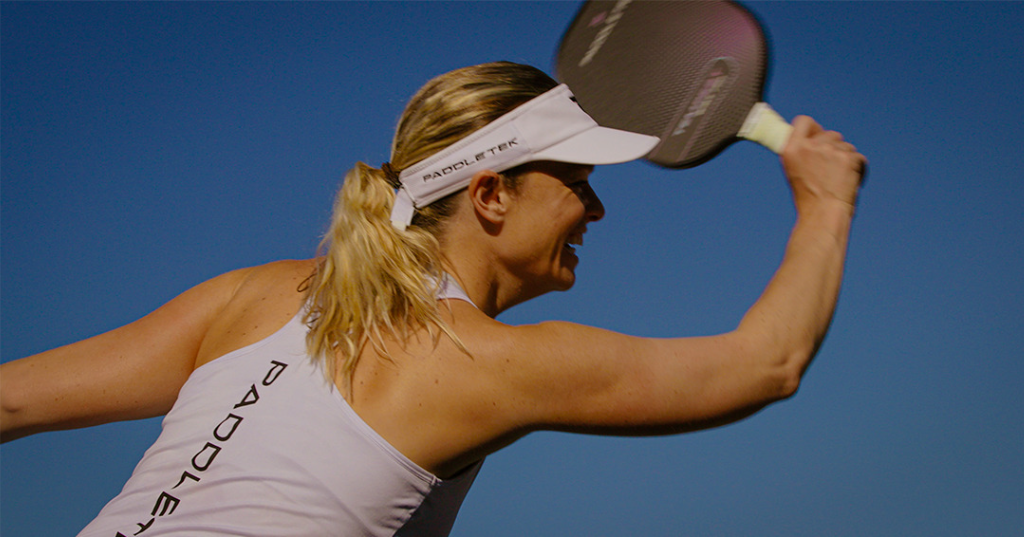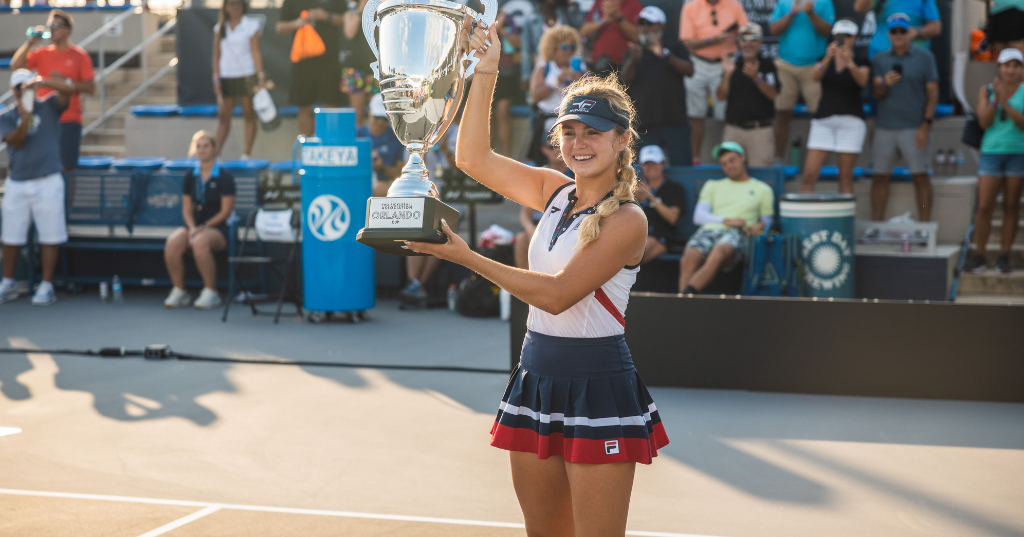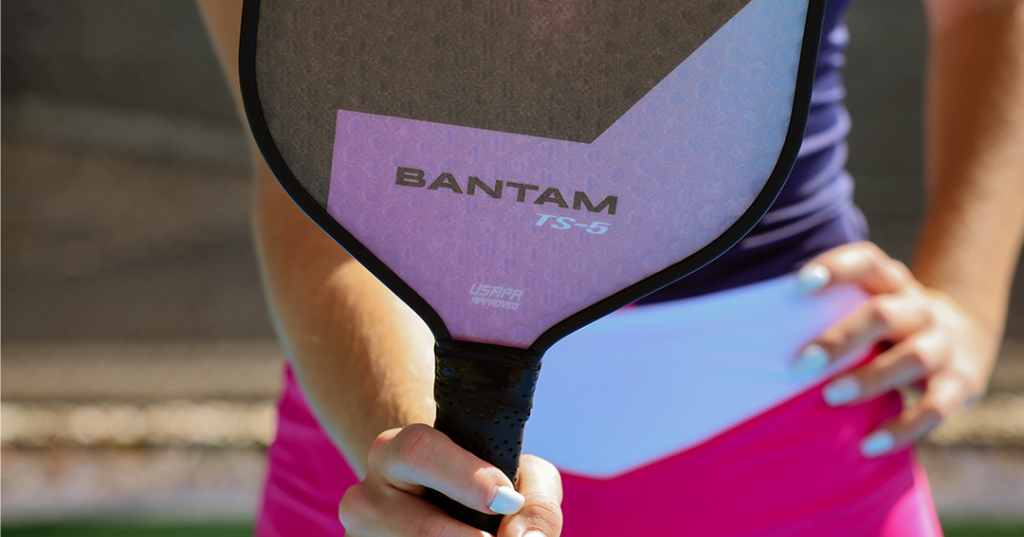If you're new to pickleball, odds are that serving confuses you. Maybe you've watched others play in person or online, and it seems simple enough. Yet, whenever you line up to serve, someone lets you know you've just committed a fault. So what do you need to know about the rules of serving in pickleball?
In pickleball, serves must either be a drop serve or an underhand volley serve. The former requires that the ball bounces without any assistance before it can be served, and the latter requires the server's arm to move upward while the paddle makes contact with the ball below the server's waist.
With either style of serving, the server's feet can’t touch the baseline or court, and the serve must land in their diagonal opponent’s service area.
In terms of serving technique, that's just the tip of the serving iceberg. But serving in pickleball is so much more than technique. In this article, we'll cover 5 areas of serving that frequently cause new players to make mistakes, so you can avoid making those pesky and avoidable faults.
1. It’s All About Technique
With every ball sport, there are right and wrong ways to handle the ball, and pickleball is no different. There are two key techniques to serving that create faults if you don't follow the rules:
How to Serve a Pickleball Correctly
If you’ve held or hit a pickleball before or seen one online or in person, you probably noticed that they look like Wiffle balls. However, they're far more sophisticated.
The best outdoor balls are lined with 40 small holes, constructed as a single piece, and made from lightweight but spongy plastic. The outcome is a responsive ball that's incredibly aerodynamic and plays in a way that's difficult to articulate, but you can feel a good ball vs a bad ball just by how it stays true to your shots.
You'll also notice that it doesn't take much effort to send it flying, especially if your paddle has a ton of pop. This is the biggest reason all volley serves have to be performed underhand and below the waist.
A volley serve is typically done by holding the paddle in your dominant hand and the ball in your other hand, then dropping the ball to meet contact with your paddle as you swing from below.
As of 2021, players can also drop serve, which is when you release the ball from your non-paddle hand (dropping, not throwing), let it bounce, then hit with your paddle to serve. Drop serves do not follow many of the same constraints as a conventional volley serve, which can also make it a beginner-friendly option.
But if you decide to go the drop-serving route, you'll want to read about the specifics of its technique.
Where to Serve in Pickleball
When served, the ball must land in the service area diagonal to the server's position. For instance, if you're serving from the right service court, you want to make sure your serve lands in your opponent’s right service court.
Keep in mind that a served ball can’t land in the kitchen or on the kitchen line, so utilize enough force to send the ball past that demarcation line into the opposing service court.
Strategically, serving deep is helpful, as it pushes the receiving team farther back on the court, making it more difficult for them to rush the kitchen after the third shot.
The best players vary the velocity and placement of their serves throughout a game.
2. Calling the Score
Another crucial part of serving in pickleball is calling out the score before striking the ball. This is similar to other racquet sports, like tennis and Ping-Pong. It's a simple enough exercise in singles pickleball, but doubles can get a bit more complicated for beginners.
Calling the Score in Doubles
The score in doubles includes three sets of numbers, with the last number representing the server number:
- Serving Team's Points
- Receiving Team's Points
- Server's Number
In doubles, there are two players per team, so naturally, there are two servers. Each is assigned a server number, either 1 or 2. This number depends on who serves first each time a team serves. This can change throughout the match as each team loses rallies and exchanges the right to serve. Losing the right to serve is also called a side out.
Calling the score in doubles might look like the following:
Let’s say you're serving for your team and are the second server. Your team has 5 points and the opponent has 4. You would call “5, 4, 2” before your serve.
Calling the Score in Singles
In singles, there’s only one server per team, so there is no server number. This means players need to call only the score.
For example, if you have 3 points and your opponent has 5, you would call “3, 5” before serving the ball.
Regardless of whether you're playing singles or doubles, you need to know how to call the score correctly, because it's a requirement (4.D.)
3. The Double Bounce Rule
Pickleball's double-bounce rule is a unique requirement compared to other racquet and paddle sports. It creates a fairer game and longer rallies. It equalizes the court after the serve and initial return, placing constraints on where the ball can bounce and when volleys can begin.
Directly following a serve, the double-bounce rule (also called the two-bounce rule) states that “if the serve or service return does not bounce before the ball is struck…” it results in a fault (rule 7.A.)
The wording is a bit confusing for beginners, so let’s break it down into smaller pieces. The double-bounce rule essentially prevents any volleying by requiring two things:
- The served ball must bounce off the ground once on the receiving team’s side, landing only in the service area
- The serving team must allow the returned ball to bounce off the ground once before hitting it back to the receiving team.
Imagine you have two teams battling it out - Team Paddle vs. Team Tek.
Team Paddle serves the ball. Under the double-bounce rule, Team Tek allows it to bounce once on their side, then returns the ball to Team Paddle. Team Paddle allows it to bounce once on their side, then hits it back.
Only after Team Paddle hits it back can either team begin hitting volleys—which is when the ball is hit before it touches the ground.
Beginners often make the mistake of volleying during this two-bounce phase - most commonly, they violate the double-bounce rule when they’re on the serving team and prepping for the third shot.
Remember - whether it's the first hit or the 20th hit of a game, there is no volleying in the kitchen (AKA Non-Volley Zone.) And with the double-bounce rule, no volleys are allowed anywhere on the court until after the third shot.
4. How to Rotate Servers
This is probably the most technical and potentially confusing part of pickleball. But once you read about it and watch it in person or online, the serving sequence quickly becomes something you don't have to think about. Let’s review the basic rules:
Singles Serving Sequence
The order of serving in singles is straightforward. Service should always begin in the right-side service court. Once the ball is served, it has to bounce once on the receiving side and once on the serving side (double-bounce rule.) After that, a rally ensues, and ultimately a fault leads to a point.
If the serving side wins the rally and earns a point, the server rotates to their left service court and begins again.
If they lose the rally, there’s a side out; neither player switches sides of the court, and the opponent serves from their right service court.
A good rule of thumb: If your score is even (0, 2, 4, 6, 8, 10), you’ll serve from your right service court, and if it’s odd (1, 3, 5, 7, 9), you’ll serve from your left service court.
Doubles Serving Sequence
If you can understand the intricacies of service sequence in singles, you'll quickly get how doubles operates, even though it’s different.
Remember, doubles involves four players, with two teams made of two players on each side of the net. Each player has a server number, which can change each time they receive the right to serve with a side out.
Because it's so important, it's worth repeating the logic of server numbers, as it impacts calling the score correctly and knowing who’s serving when:
- The first person to serve each time their team gets the serve is server 1. The second is server 2.
- The server on the right side of the court always serves first after each side out and therefore becomes server 1.
- The player on the left becomes server 2.
- It's a common beginner’s mistake to think that the servers keep their same server numbers throughout the game - remember, each server number is only good for that service turn.
- Each of the two servers on each team has the chance to serve before turning the ball over to the opposing team in a side out. (Except for the first-server exception. See below.)
If the first server is serving the ball and their team loses the rally, instead of passing the serve to their opponent as in singles, their partner then gets a chance to serve.
This means, for example, if the first server sends their first serve from the right service court and their team loses the rally, they pass the serve to their partner, who picks up serving from the left service court.
What most beginners incorrectly assume is that after server 1 faults, the ball goes to the opposing team's server 1. The serve stays on the same side and goes to the partner, server 2.
If the second server’s rally is also lost, neither player switches sides and the serve passes to the opposing team.
First Server Exception
The only exception to the serving sequence of doubles is aptly named the first-server exception, and it applies only to the serving team at the beginning of a game. This serve is done from the right service court, but the first person to serve starts as the second server.
You might hear that player state the opening score as “0, 0, 2” or more commonly as “0, 0, start.”
Once that team loses a rally, the ball is immediately given to the opposing team for service, and that team begins with their server 1.
This is to minimize the advantage of serving first in pickleball.
5. How to Score Points
In pickleball, points can be scored only by the team that has control of the serve. The serve gets rotated and side outs occur when the serving team commits a fault.
Faults include hitting the ball out of bounds, stepping into the service court during a serve, failing to send the ball over the net, hitting a volley from the kitchen, and a host of other situations.
Other than the first-server exception, if the serving team commits a fault and the first server had served the most recent ball, they pass the serve to their partner, the second server of that team.
If that same team commits a fault and the second server had served the most recent ball, a side out occurs and the ball goes to the opposing team to begin serving.
However, if either member of the receiving team commits a fault, the serving team gets a point and serves again.
The Rules of Serving Extend Beyond Technique
We hope this handy guide has given you all the knowledge you need to serve confidently in your next pickleball match. The technique is certainly important and can be an incredible advantage if you're able to control speed and placement well, but much of serving for beginners is knowing the rules rather than technique.
Understanding who’s serving, where to serve, how to call the score correctly, etc. are just as crucial as knowing the proper serving form.
Reading can get you only so far, so ingrain these rules in your mind, get out there and play, and watch the pros play a match. Seeing and experiencing it in action is an unbeatable learning tool.



Leave a comment
This site is protected by hCaptcha and the hCaptcha Privacy Policy and Terms of Service apply.